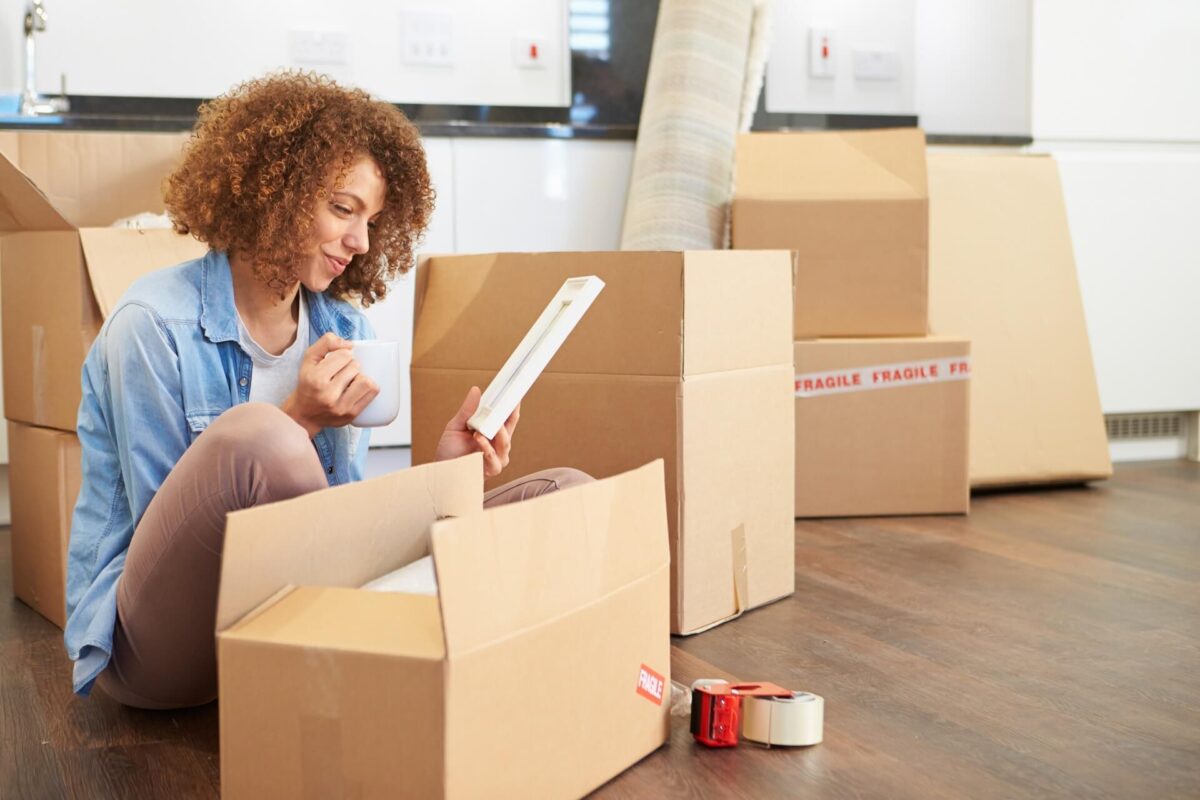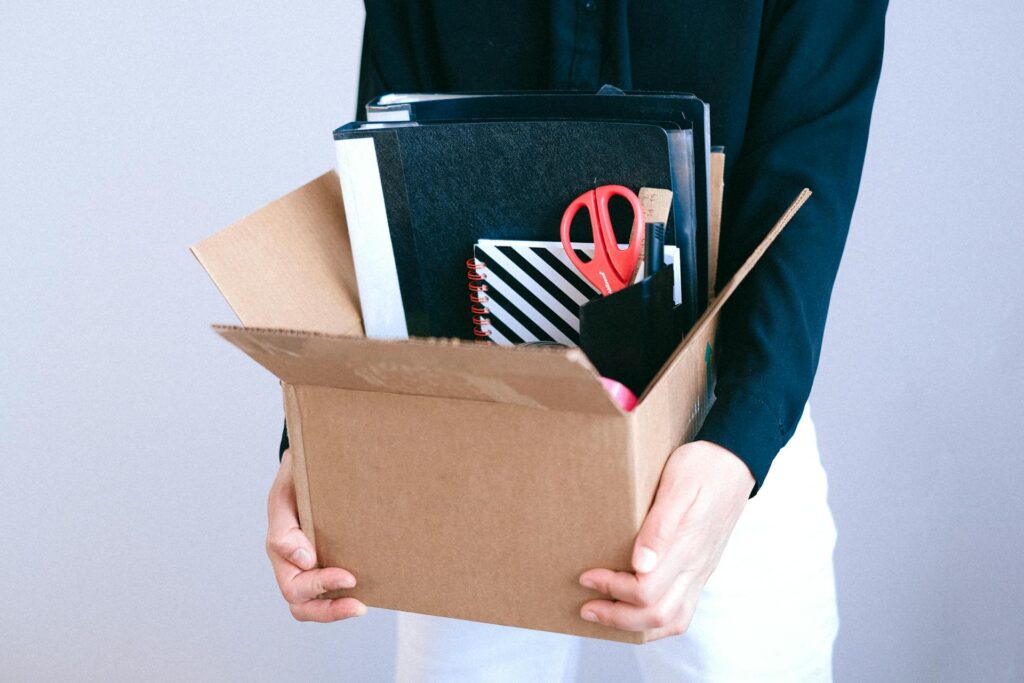When the excitement of relocation sets in, it’s easy to overlook the practical side of things. Among the most important considerations is figuring out what to get rid of when moving, especially when shipping overseas. Dive into the essentials of downsizing and strike the perfect balance between holding onto what’s meaningful and letting go.


The Benefits of Downsizing Before Moving Abroad
Relocating across the world can be an exhilarating experience, with countless decisions to be made along the way. One common relocation mistake is not taking the time to downsize and declutter before the big move.
Understanding how to get rid of stuff before moving is crucial to a more streamlined and cost-effective transition. Take the time to explore the numerous advantages of downsizing, from reducing your relocation expenses to simplifying life in your new home. Here are some:
- Cost savings – reducing the volume of your cargo can significantly lower expenses, saving you money during the relocation process,
- Easier unpacking – with fewer items to unpack, you can settle into your new home faster,
- Simplified lifestyle – downsizing encourages you to prioritize and focus on what truly matters, leading to a more minimalist and clutter-free lifestyle,
- Adapting to new spaces – a smaller inventory makes it easier to adapt to different living arrangements, like smaller or differently configured spaces in the new country,
- Reduced stress – a well-organized and decluttered move can alleviate stress, allowing you to focus on the excitement and opportunities of the new adventure,
- Environmental benefits – by reusing, recycling, or donating items you no longer need, you can minimize waste and reduce the carbon footprint during relocation.
- Opportunity for a fresh start – downsizing provides the chance to let go of the past and embrace a new beginning, helping you adjust to new surroundings and culture.
How to Decide What to Get Rid of When Moving Internationally
Knowing how to relocate to another country efficiently starts with deciding which things to get rid of when moving. Carefully assess your belongings to avoid overburdening yourself and your international moving company.
Begin by sorting your possessions into categories, from essential items and sentimental keepsakes to stuff that can be replaced or discarded. Next, consider the climate and culture of the destination and the size of your new living space to determine what to bring along.
Finally, learn how to package efficiently, using space-saving techniques like vacuum-sealing clothing and nesting smaller items inside larger ones. Learn some efficient packaging techniques from various sources.
Tips for Decluttering Before Relocation
Decluttering your home before an international move helps you save money for relocation and significantly reduces relocation stress. Start by going through each room of the house, creating separate piles for items to keep, donate, sell, or discard.
Focus on eliminating duplicates, items you haven’t used in the past year, and things that won’t suit your new lifestyle. By systematically decluttering, you can minimize the amount of stuff to transport and create an organized and manageable relocation.
Organizing a Garage Sale or Donation Event
Once you’ve sorted through everything and determined what’s no longer necessary, consider hosting a garage sale or organizing a donation event. These options offer a great way to turn your unwanted items into extra cash or give back to the community.
As you prepare for moving to a new home, follow these relocation day tips: Advertise your garage sale on social media and local bulletin boards, price items fairly, and be open to negotiation.
For donation events, contact local charities or non-profit organizations to arrange a pick-up or drop-off of your gently used items. Both options will help you minimize waste and see that your unwanted stuff finds a new purpose.


Downsizing Your Furniture and Appliances
When moving internationally, figure out how to get rid of furniture when moving to make the transition seamless. Large, bulky items can be challenging and expensive to ship, so evaluate which pieces are worth keeping and which should be left behind.
To move appliances and efficiently pack furniture, disassemble large items and carefully wrap or pad them for protection. Research the compatibility of your appliances with the electrical systems in the destination, and try replacing items that may not work or require costly adaptors.
Donating Furniture to Charitable Organizations
One of the relocation benefits of downsizing is the opportunity to give back to your community. Donating gently used furniture to charitable organizations can make a positive impact on those in need while reducing waste.
Before donating, clean and repair damaged items to ensure they’re in good condition. Research local charities or non-profit organizations accepting furniture donations and coordinate delivery. Remember that the best time of the year to move varies, so plan and schedule your donation in advance of your relocation date.
Selling Furniture and Appliances Online or Through Local Classifieds
If you prefer to recoup some relocation costs, selling furniture and appliances online or through local classifieds is a viable option. Prepare for movers by taking high-quality photos of the items and posting them on popular online marketplaces or local newspapers.
Include accurate descriptions, dimensions, and any relevant information about the condition of the items. Price your items competitively, but also be open to negotiation. This way, you can generate extra funds to put towards relocating.
The woman in the video below talks about living a minimalist lifestyle and gives tips on how to sell cluttered items and make extra money for relocation or, simply, for living.
Getting Rid of Unnecessary Belongings
When you determine what to get rid of when moving across the country or even abroad to a new city, create a relocation checklist to stay organized and focused on the essentials. Begin by discarding or donating broken, outdated, or no longer useful items.
Consider the size and layout of your new home, the climate, and cultural differences when deciding what to leave behind. This way, you’ll lighten your load and turn relocation into an efficient and cost-effective feat.
Old or unused clothing and accessories can take up a lot of space. To streamline the process, start by deciding what to pack, keeping in mind the weather, cultural norms, and your new lifestyle.
As you sort through your wardrobe, set aside items that no longer fit or haven’t been worn in a long time. Learn how to package clothes efficiently, such as rolling or vacuum-sealing, to save space. Donate gently used items to local charities, sell them online or at a garage sale, or consider hosting a clothing swap with friends and family.
You should also properly dispose of electronics and household items you don’t need, or that won’t function in your new country. Research local recycling centers or electronic waste facilities that accept computers, TVs, and small appliances.
Some retailers and manufacturers may also offer take-back programs for old electronics. For large appliances or household items, sell, donate to a local charity, or offer them for free on online marketplaces.
To relocate safely and responsibly, you must dispose of hazardous materials like paint, chemicals, batteries, and other potentially dangerous items. They require special handling and should not be thrown away with regular household waste.
Research local hazardous waste facilities, recycling centers, or community collection events to dispose of these materials safely and in an environmentally friendly manner. By recycling and disposing of hazardous materials, you’ll contribute to a cleaner environment while moving on a low budget.
Preparing for the Move
As the relocation date gets closer, you should finalize the details and ensure a smooth transition. One crucial aspect of this process is selecting reputable international moving services.
Research and compare different companies, read customer reviews, and request quotes to find the best option for your needs. Professional movers can guide you through the logistics and regulations of moving abroad, providing invaluable support and expertise.
Pack and Organize What You’re Taking With You
Once you’ve decided what to bring, it’s time to pack and organize your stuff. Consider enlisting the help of packing services, which can offer professional assistance and materials to ensure your items are safely and securely packed.
Label each box with its contents and the room it belongs to, and create an inventory list to keep track of your belongings. Organizing your possessions methodically will make the unpacking process in your new home more manageable and efficient.
Make Arrangements for Storage or Shipping of Belongings
In some cases, you may need to store or ship some stuff separately. Work with an overseas moving company to arrange for shipping items that require special handling or won’t fit in your new home.
Additionally, research storage services in your current or new location if you need to temporarily store something. By making these arrangements in advance, you can ensure your possessions are secure and accessible when needed.
Tips for Minimizing the Number of Belongings to Move
To streamline your relocation process and package everything efficiently, you need great tips. Here are a few to get you started if you’re unsure how or to help you continue if you’re stuck:
- Begin decluttering and organizing stuff several months before, giving yourself plenty of time to sort, sell, donate, or dispose of items,
- When deciding what to keep, ask yourself if the item is essential, holds sentimental value, or will be useful. If it doesn’t meet any of these criteria, consider letting it go,
- Consider the size, layout, and climate of your destination when deciding what to bring. This way, you’ll avoid shipping items that won’t fit or be practical in your new location,
- Scan important documents, photos, and CDs/DVDs to save space and reduce the number of items to transport,
- Make an effort to find new homes for your unwanted belongings, whether it’s through selling, donating, or recycling.
These tips are basic but may require too much of your time, so start this process as soon as possible.


Don’t Forget to Pack Essentials for the First Day (Or Week)
Amidst the chaos of moving and settling into a new home, it’s easy to overlook the items you’ll need immediately upon arrival. Pack a box or suitcase with essentials for the first day or week in your new home. Having this accessible will ensure a smoother transition and help you feel more comfortable during the initial settling-in period.
What Are Essential Items?
Essential items are those you’ll need during the first few days in your new home before you have the chance to fully unpack or make any necessary purchases. Some examples of essential items include:
- Clothing – clothes for a week, including sleepwear, underwear, and weather-appropriate attire. Don’t forget socks and comfortable shoes,
- Toiletries – basic toiletries such as toothbrush and toothpaste, conditioned, shampoo, soap, razor, and personal care items you use daily,
- Medications and first aid – prescription medications, over-the-counter remedies, and a small first aid kit with band-aids, pain relievers, and necessary allergy medications,
- Important documents – passports, visas, driver’s licenses, birth certificates, and other essential documents,
- Electronics and chargers – phone, laptop, tablet, and chargers to stay connected and entertained during your first few days,
- Snacks and non-perishable food – easy-to-prepare or ready-to-eat snacks and meals, as you may not have immediate access to grocery stores or fully equipped kitchens,
- Basic kitchen items – essentials like a pot, pan, cooking utensils, a plate, bowl, cup, and silverware to prepare simple meals,
- Bedding and towels – sheets, pillows, blankets, and bath and hand towels to ensure you have something to sleep on and dry off with after a shower,
- Cleaning supplies – essential cleaning supplies, like a sponge, dish soap, all-purpose cleaner, and a few garbage bags,
- Tools and utility items – a small toolkit with basic tools like a screwdriver, hammer, and measuring tape, as well as items like scissors, a flashlight, and batteries,
By preparing a box or suitcase with these essential items, you’ll be better equipped to handle the first few days in your new home and focus on settling in and exploring your new surroundings.
Moving Overseas Can Make Packing Difficult – Call Sunset International Shipping for Help
Relocating overseas can make packaging challenging, but you don’t have to face it alone. As a premier overseas shipping company, Sunset International Shipping is here to help. Our team of experienced professionals is dedicated to providing solutions and ensuring a seamless transition to your new home abroad.
Don’t let the complexities of international relocation overwhelm you; let us handle the logistics so you can focus on the excitement of starting a new chapter. Reach out to Sunset International Shipping today and take the first step towards a successful move.
FAQ
The amount you should get rid of before relocating depends on factors such as the size of your new home, the cost of shipping, and your desired lifestyle. Start by evaluating the items you no longer need or use and consider the practicality of each item in your new home.
Deciding whether to keep sentimental items is a personal choice. Consider the emotional value of each item and whether it can be replaced or replicated. If space is limited, you might choose to keep only the most cherished items or digitize photos and documents.
Assess the usefulness, value, and emotional significance of each item. Consider if the item will fit in your new home, if it’s practical for the new environment, and if it contributes to the lifestyle you want to lead.
Common items people get rid of when relocating include outdated electronics, excess clothing, duplicate items, old furniture, and items that won’t work or fit in the new home.
The decision to sell or donate depends on your goals and preferences. Selling items can help recoup some costs, while donating items can provide satisfaction in helping others and contributing to a good cause.
Getting rid of furniture can save on shipping costs and make relocation manageable. Consider the size, layout, and style of your new home, as well as the availability of furniture in your new location.
Yes, selling belongings at a garage sale or online is a practical way to downsize. It allows you to recoup some costs, declutter, and find new homes for your unwanted items.
Items that can’t be donated or sold should be disposed of responsibly. Recycle items where possible and dispose of hazardous materials safely according to local regulations.
If you haven’t used an item in a long time, it’s worth considering whether it still holds value or purpose for you. If not, it’s likely a good candidate for decluttering.
Consider the item’s potential future use, cost, and availability in your new location. If the item is difficult to replace or would be costly to repurchase, it might be worth keeping. However, if the item is easily replaceable and unlikely to be needed immediately, it’s probably safe to let go.









